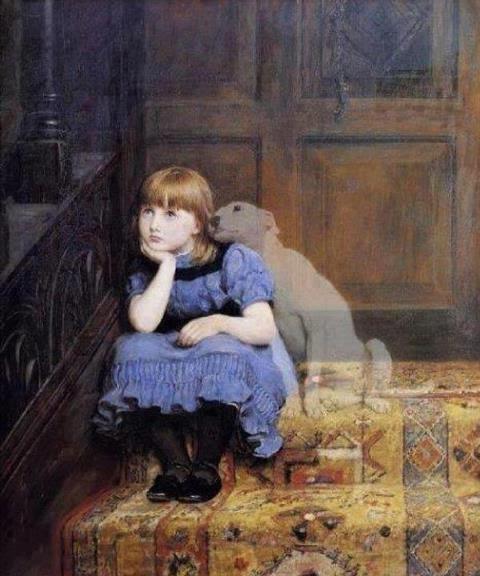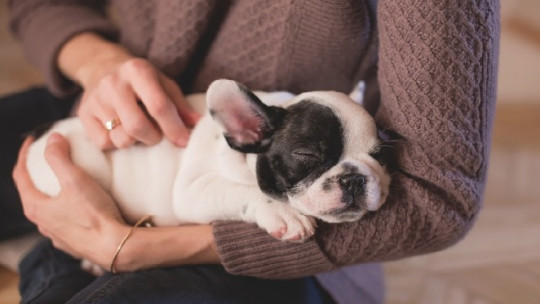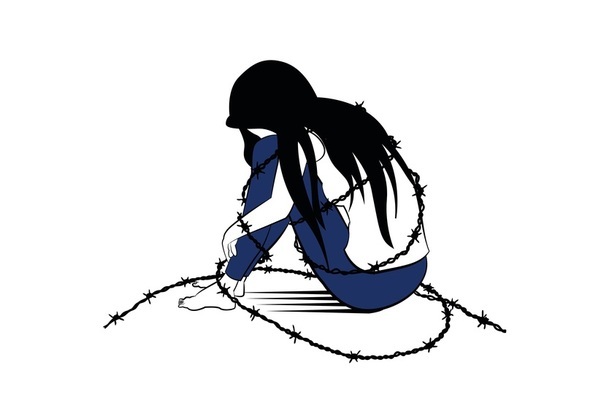The loss of a pet, The grief suffered when a person dies is one of the most painful and stressful experiences one can experience
It is well known that the topic of grief due to the death of a family member, friend or acquaintance is widely studied and, more importantly, socially accepted. But, What about when our beloved pet dies?
It is an issue that, despite becoming increasingly important due to the growing change in the role of pets in the family unit, continues to be ignored, undervalued and even denied. Below we will go into more detail.
What we know about pet grief
Referring to the psychological impact that the grieving process for a pet entails, according to the studies carried out by Field and his colleagues (2009), is comparable to what is experienced after a human loss The grieving process would last between 6 months and a year, with the average being 10 months (Dye and Wroblel, 2003).
In various studies (Adrian et al, 2009) it was found that this death produced emotional incapacitation in 12% of people, which could lead to psychological pathologies, although this is not the most common. In another study (Adams et al., 2000), these people were seen to have physical and emotional symptoms such as sleep problems, loss of appetite, and feeling that “something inside them had died.”
Differential aspects of the mourning process for human loss
As we have already mentioned, the process experienced by the loss of a pet is similar to that of a loved one, but despite this there are certain characteristics that make it a little different: the great feeling of guilt, social attitudes and the absence of rites.
Social attitudes
When this type of loss occurs, the affected people may have serious difficulties in carrying out a correct resolution of grief due to the harsh social attitudes they have to face, which is called unacknowledged grief.
In fact, in a study conducted by Adams et al. (2000), it was discovered that half of the people who had suffered this type of loss had the feeling that society did not consider their situation “deserving” of a grieving process. In other words, that this loss is not important since the deep bond between a person and their pet is not legitimized and this is considered replaceable (Doka, 2008).
Unrecognized grief, then, would appear when a person feels that their process does not have recognition or validation, and there is a lack of support for this. Comments that exemplify this could be: “it’s not that big of a deal, it’s just a dog (or whatever species is the case)”, “then buy another one”, “you can’t abandon your responsibilities for this”, etc.
As we have already mentioned, this type of unacknowledged grief can hinder the natural course of grief since the person could force themselves to behave “normally”, “as if nothing had happened”, since that is what is required of them, and they could also retain internalize all their feelings and refuse to ask for help out of shame. For all this, This denial of grief can lead to complicated or unresolved grief (Kaufman and Kaufman, 2006).

Guilt in grieving the loss of pets
Various authors investigated that Guilt is a factor mostly present in cases of pet loss This extreme guilt is explained by the type of relationship established with the animal and because the majority of deaths occur by euthanasia.
The type of relationship is explained by the fact that the caregiver considers himself totally responsible for his partner’s life, which is why the relationship is one of total dependence. Adding to this that we would see our pets as helpless, this would lead to a relationship similar to that of a parent with their baby.
Death by euthanasia would be a clear factor in guilt, enhancing it in most cases It can be seen as a liberating alternative from the animal’s suffering but one can also have the feeling that he has made the decision to kill his friend, turning him into a murderer.
The funeral rites
The fact of being able to say goodbye in a formal way to your loved one is a key differentiating factor from grief in animals The absence of this and many other rites can lead to problems in the resolution of grief since it prevents carrying out an act in honor of the animal and being able to say goodbye publicly.
Although there are currently pet crematories, this act is more of a procedure than a ritual, since the usual method is for the services to take care of the ashes and deliver them to the corresponding veterinarian (Chur-Hansen, 2010).
Conclusions
The review of empirical studies leads to the conclusion that Yes, there is a grieving process in people who lose their pet The impact of this is comparable to the loss of a loved human being and there is also a high probability of becoming a complicated grief due to the factors mentioned.
Recommendations for grieving
The recommendations we can make go in the direction of the need to raise awareness about these types of losses in order to facilitate this process to be carried out correctly in the people who suffer from it, since, in addition, it is an issue that is becoming more frequent in our society every day.
On the other hand, recommendations for people who are going through these moments would be to hold a commemorative event for the pet, a formal farewell to it. It can be in letter format, planting a tree, reciting a few words in their name… there are many options, but expressing thoughts with words is highly recommended since it helps to reorganize one’s feelings and ideas and also allows one to express how much the pet has given us.
Another important measure is try to gradually reduce the bitter thoughts and stay with the happy ones remember the many good moments that our partner has given us, in order to create resilience.
Last but not least, keep in mind that a pet is irreplaceable. It is not advisable to desperately try to fill that gap by having another, since a new pet should not be a replacement. When the feeling appears that a good part of the grief has passed and it is time, then there will surely be many animals waiting to be loved.









